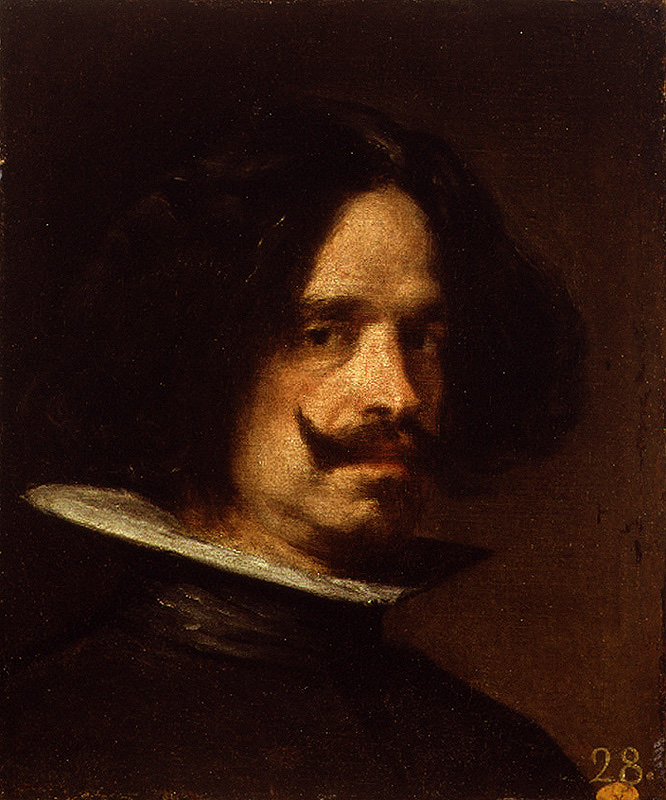Landmark Velázquez exhibition unites early portraits
of Philip IV from Prado and Meadows Museums
Portraits of Spanish King Philip IV highlight a new Meadows Museum exhibiion.

DALLAS (SMU) – As part of its multifaceted partnership with the Prado, the Meadows Museum is presenting the most important monographic exhibition devoted to Velázquez in the United States in more than two decades.
Diego Velázquez: The Early Court Portraits, which opened September 16, 2012, and continues through January 13, 2013, explores the development and impact of Velázquez’s work as the court portraitist for King Philip IV, one of history’s most influential arts patrons and connoisseurs.
The exhibition brings together key paintings from this period, including two early portraits of the King from the Meadows and Prado collections, united for the first time in four centuries. The exhibition is curated by one of the world’s leading Velázquez scholars, Javier Portús, head of the Prado’s Department of Spanish Painting until 1700. In the exhibition’s accompanying catalogue, Portús states that the artist’s first portrait of the king “may well be the work at the Meadows.”
In anticipation of this exhibition, Meadows/Kress/Prado Fellow Iraida Rodríguez-Negrón consulted directly with the Prado’s Gabinete Técnico de Documentación, the section of the museum’s conservation department where all technical studies such as radiographs, infrared reflectography, and UV light analysis are performed and analyzed. The Prado’s Gabinete Técnico then conducted extensive research on both museums’ Philip IV portraits.
X-rays of the Meadows portrait revealed underlying experimentation with the outline of the King’s neck and shoulders as well as variations in color and composition, suggesting this was Velázquez’s first attempt to paint the King. By contrast, it is clear that the King’s form was fully devised when Velázquez began painting the portrait now in the Prado’s collection. Through this analysis, an outline beneath the surface of the Prado’s portrait was also discovered that replicates the contours seen in the Meadows painting, now understood to be the direct prototype of this later portrait. Technical materials will be included in the exhibition to shed light on these new findings.
The Prado and the Meadows Museum, two of the world’s leading Spanish arts institutions, began a groundbreaking partnership in 2009 that has included the exchange of scholars, research, works of art, and exhibitions. Following the success of its first two years, and in anticipation of The Early Court Portraits as the final originally scheduled exhibition, the museums recently announced an expanded agreement that will continue their joint initiatives and add two collaboratively developed exhibitions over the next two years.
“After frequent visits to Madrid in the 1950s, Meadows Museum founder Algur H. Meadows had a vision to establish a ‘small Prado in Texas’, and built an incredible collection of Spanish art that forms the foundation of the museum today,” said Mark A. Roglán, Director of the Meadows Museum.
“Over the last two years, our partnership with the Prado has been another major step in realizing his aspiration, and The Early Court Portraits is yet another," said Roglán. "The new research conducted by our partnership fellow is exactly the kind of important work we hoped would emerge from our cross-cultural collaboration. We are thrilled to bring new insights to the study of Velázquez and to facilitate a renewed focus on the artist in the United States.”
One exhibition highlight, from a private collection in Spain, is a Philip IV portrait from the workshop of Velázquez that has never before been shown in public. This painting will illustrate Velázquez’s influence on court portraiture of the period and show how his models determined the painted likeness of the King. Additional loans to the exhibition will give visitors a glimpse of key figures that populated the Spanish court at the time, notably three Velázquez portraits from other American institutions: the poet Luis de Góngora y Argote (1622) from the Museum of Fine Arts, Boston; the nobleman Don Pedro de Barberana (c. 1631-33) from the Kimbell Art Museum; and The Jester Calabazas (c. 1631-32) from the Cleveland Museum of Art.
 Diego Velázquez (self-portrait) |
Created during his first ten years at court — a historically overlooked period that established his career — these works showcase the artist’s technical virtuosity and ability to penetrate a sitter’s personality, his masterful manipulation of grays and blacks, and his skill in capturing the nuances of fabric textures. The exhibition continues with 16 prints on display, some containing engraved portraits modeled after Velázquez’s work, such as a portrait of Philip’s prime minister, the Count-Duke of Olivares, by Paulus Pontius.
The Meadows Museum will be the exclusive venue for this landmark exhibition. The Early Court Portraits will be accompanied by a bilingual and amply illustrated interdisciplinary catalogue with contributions from leading scholars in the fields of Spanish art, history, and literature. In addition the Museum will present a symposium with lectures given by preeminent scholars of Golden Age Spanish art on September 13, as well as a lecture on November 15 by noted Velázquez scholar Professor Jonathan Brown, the Carroll and Milton Petrie Professor of Fine Arts at the Institute of Fine Arts, New York University.
"The partnership of Philip IV of Spain and his painter Diego Velázquez provided one of the high moments in the history of art,” notes Dr. Brown. “This exhibition takes us back to 1623 and the very beginnings of this patron-painter relationship. We see the painter connecting himself to the traditions of royal imagery in the court of the Spanish Hapsburgs and adapting to heavy demands for portraits of the king. He seems quickly to have formed a team of assistants; there is still much to be learned about how the workshop functioned. A piece of the puzzle may be found in the bust-length portrait of Philip IV in the Meadows Museum, the painting considered to be the model painted by Velázquez for the use of his assistants. This exhibition is the first to attempt to solve these weighty problems and, as such, is of vital importance to the understanding of this great painter."
This exhibition has been organized by the Meadows Museum and the Museo Nacional del Prado, and is funded by a generous gift from The Meadows Foundation. This exhibition is supported by an indemnity from the Federal Council on the Arts and the Humanities.
About the Prado and Meadows Museum Partnership
The Meadows and the Prado originally announced in 2009 the launch of a three-year partnership that included interdisciplinary research at Southern Methodist University (SMU), an unprecedented internship exchange between the two museums, a range of public programs, and the loan of three major paintings from the Prado. The first painting, El Greco’s Pentecost (1596-1600), was exhibited at the Meadows in fall 2010. Jusepe de Ribera’s Mary Magdalene (1640-41), the second painting, was paired with three additional loans of Ribera works from other collections, in a larger exhibition that took place in fall 2011.
In summer 2012, following the success of the first two years of partnership, the museums announced an expanded partnership that will continue the many initiatives they began in 2009 and add two additional collaboratively developed exhibitions. The first will be Impressions of Europe: 19th-Century Vistas by Martín Rico, (Madrid, October 12, 2012 - February 10, 2013; Dallas, March 10 - July 7, 2013) which will be the first-ever monographic exhibition on the work of Martín Rico y Ortega, one of the most important artists of late-19th-century Spain and a pioneer in landscape painting.
Meadows Museum
The Meadows Museum is the leading U.S. institution focused on the study and presentation of the art of Spain. In 1962, Dallas businessman and philanthropist Algur H. Meadows donated his private collection of Spanish paintings, as well as funds to start a museum, to Southern Methodist University. The museum opened to the public in 1965, marking the first step in fulfilling Meadows’ vision to create a “Prado on the Prairie.”
Today, the Meadows collection of Spanish art—one of the largest and most comprehensive outside of Spain—comprises more than 125 paintings and sculptures and approximately 450 works on paper. The collection spans from the 10th to the 21st century, and includes medieval objects, Renaissance and Baroque sculptures, and major paintings by Golden Age and modern masters.
# # #